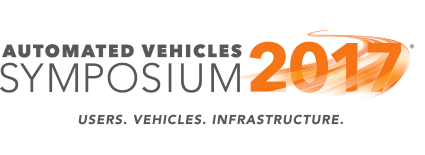China could be poised to dominate car manufacturing thanks to robocars
Submitted by brad on Fri, 2017-09-22 12:24The robocar revolution has the potential to assist China in dominating vehicle manufacturing. That's the bad news -- unless you are a Chinese manufacturer. The better news is that manufacturing is only part of the car industry, and it's getting smaller.
- China has the largest car manufacturing industry, and is strong in electric cars
- Brand of the manufacturer is almost irrelevant in taxi service
- Reliability of the taxi is much less relevant
- US tech companies need manufacturing partners
- The money in ground transport is in service, not cars
Today, Chinese brands are not sold in any numbers in the USA, or almost anywhere outside of China, but China is already the largest car manufacturing country in the world. Chinese brands have no cachet (even in China, it seems) and western and Korean/Japanese brands are strong. How might that change?
Car brand is very important for people buying a car to own. In fact, the nameplate is the top source of value in a modern car sale. The difference is that we will be moving from people buying cars to own towards people buying rides.
When you order "Uber Select" (Uber's nicer-car offering) you don't care if what shows up is a Lexus, BMW or Mercedes. You don't even car if its a Hyundai Genesis, their brand-new attempt at making a luxury marquee. You are only going to ride in it for 15 minutes. It has to be comfortable, smooth and look nice, but rarely does the logo on the outside matter.

It's the Uber brand that matters (though not as much, as most people would find no difference between an UberSelect and a Lyft Premiere as far as the vehicles are concerned. And you might not even care if it's a Great Wall Wey (a Chinese luxury car you've never heard of) that picks you up if it looks nice and gives a reliable ride.
Of course, today the top makers like Mercedes, BMW, Lexus, Audi, Acura, Infiniti and others are known not just for luxury, but for quality. They make well engineered, reliable cars in a way the Chinese are not quite ready to do.
But do they have to? If your expensive BMW breaks down, you have to get it towed, arrange its repair and get a rental car. You're pretty angry at BMW when it does, and you paid a lot for that car to avoid that experience, and usually you do. If a car in a robotaxi fleet breaks down, you're very unlikely to even know it happened. Very rarely, a car like that might break down when you are riding in it. It would pull to the side of the road and have already summoned a replacement car. Within 2-3 minutes a new vehicle will pull up and take you on your way while the company sends a tow truck to deal with the broken car.
Of course, if it broke down while on its way to you, might might not even know it. But even the breakdown while driving will be barely worth mentioning to friends, it just didn't inconvenience you very much at all.
While the BMW will surely break down less than the Great Wall (at least for now) it also costs a great deal more. That might be worth it to avoid that owner's breakdown scenario, but it's not for a fleet breakdown. For a fleet manager, it's just a question of whether vehicle downtime cost is more or less than the extra cost of more robust engineering, with a small factor for customer inconvenience.

To top things off, I predict robocars will have fewer breakdowns. They will always been monitoring themselves, and will come loaded with sensors. They will always get proper maintenance, taking themselves to maintenance depots when it is needed. They will test all systems like brakes, steering, tires, engines and more every day or every hour when running vacant. They will never let anything get too hot or vibrate too much. Both the BMW and the cheap car will do that.





 Most of these issues revolve around fleets. Privately owned robocars will tend to have steering wheels and be usable as regular cars, and so only improve the situation. If they encounter unsafe roads, they will ask their passengers for guidance, or full driving. (However, in a few decades, their passengers may no longer be very capable at driving but the car will handle the hard parts and leave them just to provide video-game style directions.)
Most of these issues revolve around fleets. Privately owned robocars will tend to have steering wheels and be usable as regular cars, and so only improve the situation. If they encounter unsafe roads, they will ask their passengers for guidance, or full driving. (However, in a few decades, their passengers may no longer be very capable at driving but the car will handle the hard parts and leave them just to provide video-game style directions.)

 Level zero is just the existing rider on horseback.
Level zero is just the existing rider on horseback. Level one is the traditional horse drawn carriage or coach, as has been used for many years.
Level one is the traditional horse drawn carriage or coach, as has been used for many years. In a level 3 carriage, sometimes the horses will provide the power, but it is allowed to switch over entirely to the "motor," with the
horses stepping onto a platform or otherwise being raised to avoid working them. If the carriage approaches an area it can't handle, or the motor has problems,
the horses should be ready, with about 10-20 seconds notice, to step back on the ground and start pulling. In some systems the horse(s) can be in a hoist which can raise or lower them from the trail.
In a level 3 carriage, sometimes the horses will provide the power, but it is allowed to switch over entirely to the "motor," with the
horses stepping onto a platform or otherwise being raised to avoid working them. If the carriage approaches an area it can't handle, or the motor has problems,
the horses should be ready, with about 10-20 seconds notice, to step back on the ground and start pulling. In some systems the horse(s) can be in a hoist which can raise or lower them from the trail.
 There are several things notable about Waymo's pilot:
There are several things notable about Waymo's pilot: